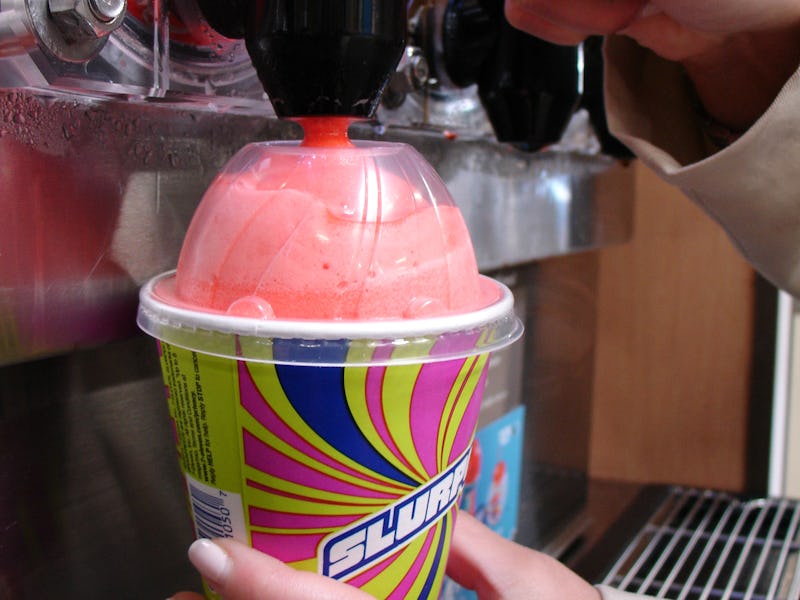The Slurpee — 7-Eleven’s iconic fizzy drink — celebrates its 50th year of delighting us on Monday. As on every July 11 (the corresponding date of 7-Eleven’s name), the chain is offering free Slurpees.
A perfect Slurpee has three main parts: carbonation, flavoring, and ice. Getting them to mix is tricky, and a sticky disaster if it fails.
Building a Slurpee starts with the ice machine. The drink is served at a perfect 28 degrees Fahrenheit. This should actually be impossible, since normal water freezes solid at 32 degrees. How does it happen? A mixer paddles constantly to keep the entire Slurpee blend at the same temperature. The motion forces the liquid to move across the freezing panels constantly and keeps ice from floating up and staying at the top of the solution, resulting in the Slurpee’s trademark texture.
The flavoring also helps keep a Slurpee below freezing. Sugar molecules slip between the water molecules and prevent them from forming huge ice crystals. According to home recipes for slushies, the solution needs to be between 12-22 percent sugar — too low and it gets too crunchy with ice, too high and you have a really cold, really sweet liquid that’s very much not Slurpee-like.
That explains the cold and flavor. But remember, a Slurpee’s got carbonation too, which triples the complication factor, since carbonation on its own is actually kinda sour. To make the flavors taste like this year’s special birthday cake flavor, scientists have to make the actual taste of the flavoring many times more concentrated than for other types of drinks. Too much carbonation and you end up with something that’s like a fizzy sour lemonade.
If you’re standing in line at a 7-Eleven today between 11 a.m. and 7 p.m. (they’re really on brand here) waiting for a Slurpee, take a moment and tip your hat to the chemical marvel that a Slurpee is.
